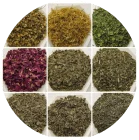Xaria8816
New Member
Hi, I’m Xaria and I’m new to this page. But I recently got a Sulcata Tortoise, her name is Luxerian. She is 5months old, she was born in August 2020. I absolutely love her but I’m also new to the tortoise owning. So I’m free to any advice. Her enclosure is 3ft long and 2ft wide. I have 2 hides in her enclosure and one side is cool and the other is warm. I keep humidity at 72 and temp at 70-75. I soak her on a daily to every other day basis, to avoid shell rot. We go outside on warm days. And I give her leafy greens,tomato’s, and cucumber for meals. I also provide her with calcium. But as I said I’m new and if anyone has advice, I’m all ears. Thank you for reading and I’ll post with a picture.<3


